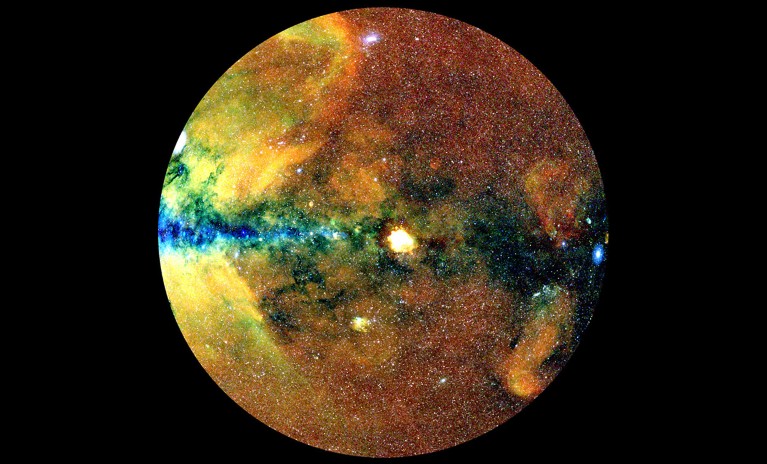- NEWS
This new map of the Universe suggests dark matter shaped the cosmos

In this map of a celestial hemisphere — compiled from data from the eROSITA telescope — the colours reflect the wavelengths of X-rays. Hot gas haloes surrounding galaxy clusters have broad-band emissions (white), as do black holes (white dots); diffuse emissions have long wavelengths (red); and in the central regions of the Milky Way, dust blocks longer-wavelength emissions, so that only short-wavelength X-rays are visible (blue or black). Multicoloured clouds are supernova remnants. Credit: MPE, J. Sanders for the eROSITA consortium
Access options
Access Nature and 54 other Nature Portfolio journals
Get Nature+, our best-value online-access subscription
$29.99 / 30 days
cancel any time
Subscribe to this journal
Receive 51 print issues and online access
$199.00 per year
only $3.90 per issue
Rent or buy this article
Prices vary by article type
from$1.95
to$39.95
Prices may be subject to local taxes which are calculated during checkout
doi: https://doi.org/10.1038/d41586-024-00489-8
References
Ghirardini, V. et al. Preprint at https://arxiv.org/abs/2402.08458 (2024).
Abbott, T. M. C. et al. Phys. Rev. D 98, 043526 (2018).
Madhavacheril, M. S. et al. Preprint at https://arxiv.org/abs/2304.05203 (2023).
The KATRIN Collaboration. Nature Phys. 18, 160–166 (2022).

 Japan’s space observatory will measure X-rays in exquisite detail
Japan’s space observatory will measure X-rays in exquisite detail
 Space telescope to chart first map of the Universe in high-energy X-rays
Space telescope to chart first map of the Universe in high-energy X-rays
 Cosmic map reveals a not-so-lumpy Universe
Cosmic map reveals a not-so-lumpy Universe







